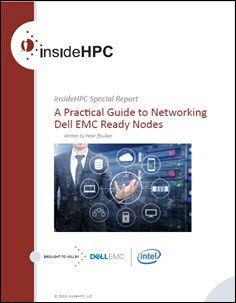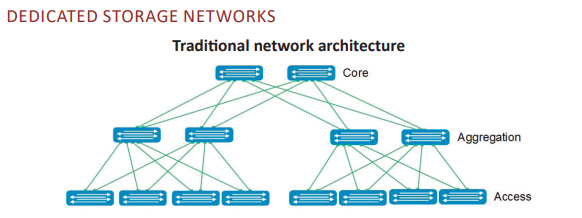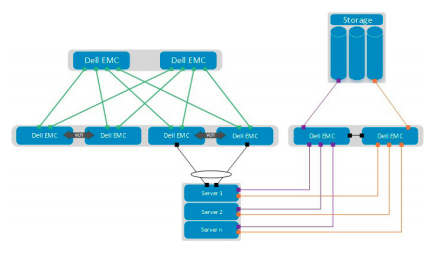This is the fourth entry in a five-part insideHPC guide series that explores networking with Dell EMC ready nodes. This post explores network switch configuration with Dell EMC Ready Nodes.

Download the full report.
Storage networks are constantly evolving. From traditional Fibre Channel to IP-based storage networks, each technology has its place in the data center. IP-based storage solutions have two main network topologies to choose from based on the technology and administration requirements. Dedicated storage network topology, shared leaf-spine network, software defined storage, and iSCSI SAN are all supported. Hybrid network architectures are common, but add to the complexity.
Fibre Channel storage has imparted a traditional network philosophy and implementation methodology to IP-based storage. The dedicated storage network has a proven design that provides performance, predictability, and manageability to storage deployments. The storage traffic is isolated from the application traffic to allow each network to be optimized for its own purpose.
As a direct result of increasing east-west traffic within the data center (server-server, server-storage, etc.), an alternative to the traditional access aggregation-core network model is becoming more widely used. This architecture is known as a Clos or leaf-spine network and is designed to minimize the number of hops between hosts, thus reducing network communication latency.

In a leaf-spine architecture, shown below, the access layer is referred to as the leaf layer. Servers and storage devices connect to leaf switches at this layer.
At the next level, the aggregation and core layers are condensed into a single spine layer. Every leaf switch connects to every spine switch to ensure that all leaf switches are no more than one hop away from one another. This minimizes latency and the likelihood of bottlenecks in the network. A leaf-spine architecture is highly scalable. As administrators add racks to the data center, a pair of leaf switches are added to each new rack. Spine switches may be added as bandwidth requirements increase.

Hybrid Dedicated/Leaf-Spine Network Architecture
A dedicated storage network has been a popular standard for iSCSI based storage for performance and administration reasons including low latency, predictability, lack of competition with application traffic, simplified management, and straight forward fault isolation.

The above diagrams that show the dedicated storage network and a leaf-spine network for application traffic may need to coexist as hybrid networks to optimize the balance between north-south and east-west network traffic.
While these established approaches are generally well understood, the configuration details can be complex and change over time.
This insideHPC guide series will also cover the following topics in the coming weeks:
- How Do I Network vSAN Ready Nodes?
- Exploring Dell EMC Networking for vSan
- Networking Dell EMC Microsoft Storage Spaces Direct Ready Nodes
- Where Ready Nodes are the optimal choice
Download the full report, “A Practical Guide to Networking Dell EMC Ready Nodes,” courtesy of Dell EMC, to learn more about Dell EMC Ready Nodes and Microsoft Storage Spaces Direct Ready Nodes.



